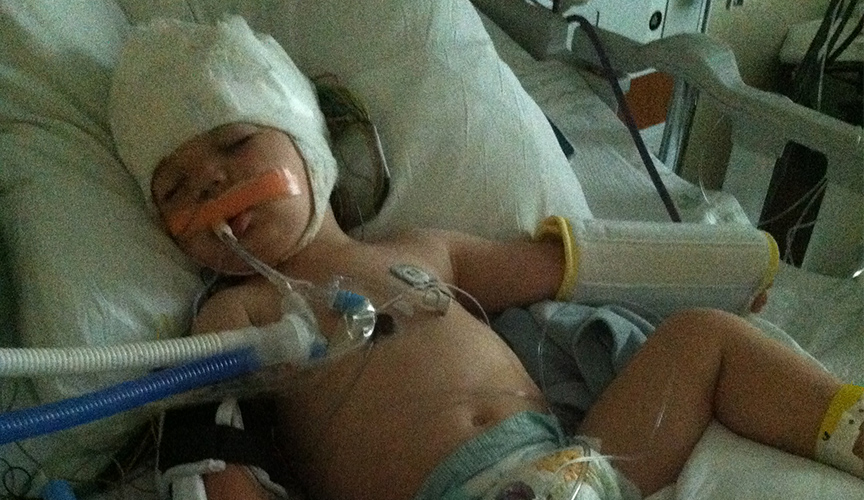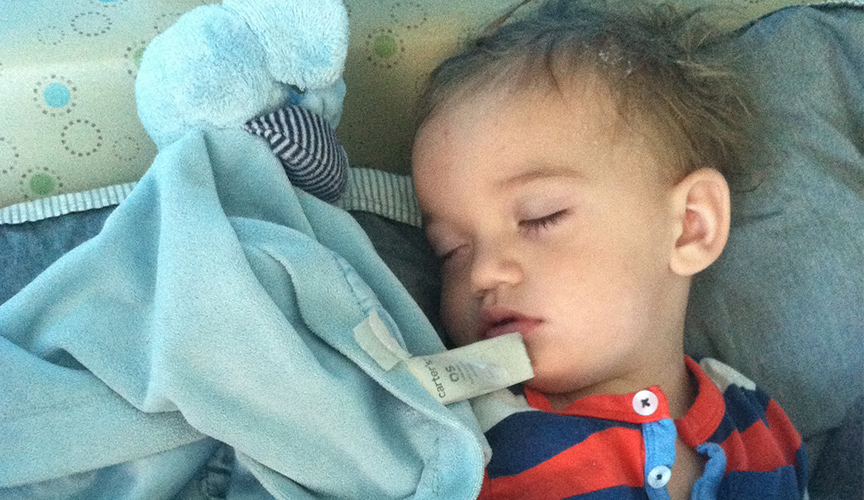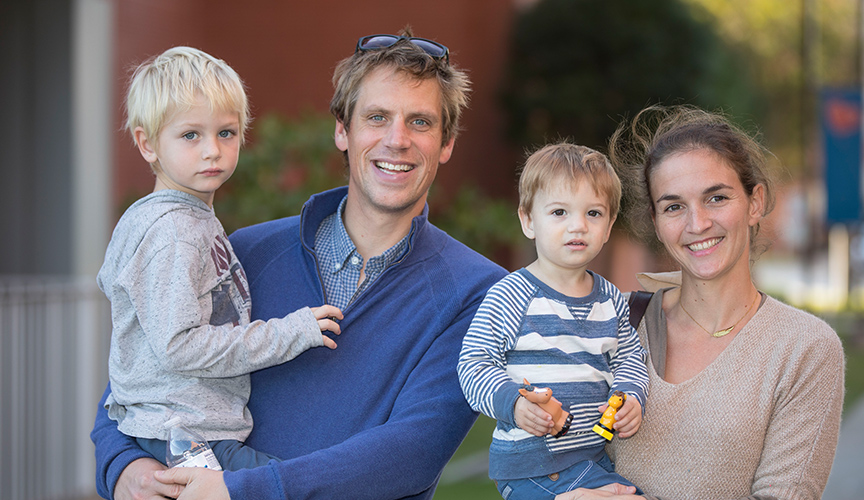Quick Thinking Saves Stan's Speech

In pediatric epilepsy patients, access to powerful tools can equal powerful outcomes. That’s a lesson the Audrey and Romain Ibled learned during their son Stanislas’ three weeks of treatment at Le Bonheur Children’s Hospital.
Stan was just 10 months old when he experienced the first of what would become a series of mild seizures. His parents consulted with doctors at Le Bonheur. Despite treatment, Stan’s seizures happened more frequently and lasted longer, and he experienced multiple types of seizures.
Epilepsy is a complex condition in children, Pediatric Neurologist Sarah Weatherspoon, MD, says. Because a child’s brain is maturing and changing so quickly, it’s important to find the cause of the seizures and the proper treatment.
“There are a myriad of different root causes, many of them genetic; and the treatment may differ based on what that cause is. To make things more challenging — the same genetic problem can present differently in different children, making the diagnosis not always clear cut,” Weatherspoon said.
Weatherspoon recommended a multiple-day study in Le Bonheur’s epilepsy monitoring unit to better understand how to treat Stan’s seizures.
“He came in on a Monday and was doing fine, and we stopped the seizure med he was currently on,” said Weatherspoon. “Then, almost out of the blue, he had a very long seizure, lasting well over an hour.”
Weatherspoon says it took a lot of medication to stop Stan’s seizure. He was moved to the intensive care unit (ICU) and intubated, as his breathing had slowed due to the heavy dose of medicine.
Afterward, he never really seemed to be himself again.
“He wasn’t talking as much, he seemed to be sleeping all the time, he continued to have more seizures,” Weatherspoon said.

Weatherspoon’s instinct was there was something more than just seizures going on. “We did a lot more testing,” she said. “The MRI was normal. We tested the blood and urine for metabolic diseases. We did a spinal tap, looking for certain diseases you can only test for in the spinal fluid.”
She also ordered an epilepsy gene panel – a test for more than 500 genes that are associated with seizures in young children. The results, Weatherspoon warned the Ibleds, could take a month or more.
The seizures continued, and Audrey and Romain worried about the impact on Stan’s brain – and on his future.
“My son’s life was really in danger,” says Romain. The couple had to talk with their two older sons now that the severity of his seizure disorder became clear.
“We needed to be prepared about it,” says Audrey. “It was very hard to understand that, especially without him smiling. He couldn’t show any expression at all.”
Weatherspoon was as anxious as the family for the lab results from the gene panel.
“One month got reduced to two weeks,” says Romain. “Dr. Weatherspoon was able to contact them, and put a lot of pressure on them.”
“The genetic test surprisingly came back for a gene that causes a specific type of epilepsy known as Pyridoxal 5’-phosphate-dependent epilepsy – or PLP,” says Weatherspoon. “This type of epilepsy usually only occurs in tiny babies, not toddlers like Stan.”
PLP isn’t treatable with traditional anti-seizure drugs. Rather, the course of treatment is a vitamin cocktail taken four times daily.

“Because of the testing, we knew the vitamin combination was the right thing for him,” said Weatherspoon, who noted that within 48 hours of coming off the seizure medicine and being treated with the combination of vitamins, Stan was talking and eating.
“The next day, he started to pick up a toy, and was improving every day,” says Audrey. “Now he walks, when we thought he might never walk … he speaks … he’s our miracle baby.”
Stan is now 2 years old and celebrated one year without seizures this summer. He’s beginning to speak in English and French. “He is where a 2-year-old should be, exploring, laughing, playing, interacting with kids the same age. No one can imagine that a year ago, Stan was fighting for his life,” Audrey says.
Stan’s story is one that reinforces the importance of having in-hospital tools that can quickly give doctors the information they need to treat their young patients. Thanks to generous support from the Children’s Foundation of Memphis , Le Bonheur will be able to provide full genome testing for children younger than 3 who receive an epilepsy diagnosis.
“Oftentimes in neurology, we say ‘time is brain.’ The quicker you get an answer, the quicker you institute a treatment, the better the outcome will be,” Weatherspoon said. “Knowing the answer can change how we treat them, what meds we give them, and can make the difference between a child who lives a really normal healthy life and a child who has a lot of medical problems.”
Help us provide the best care for kids.
Le Bonheur Children's Hospital depends on the generosity of friends like you to help us serve 250,000 children each year, regardless of their family’s ability to pay. Every gift helps us improve the lives of children.
Donate Now









